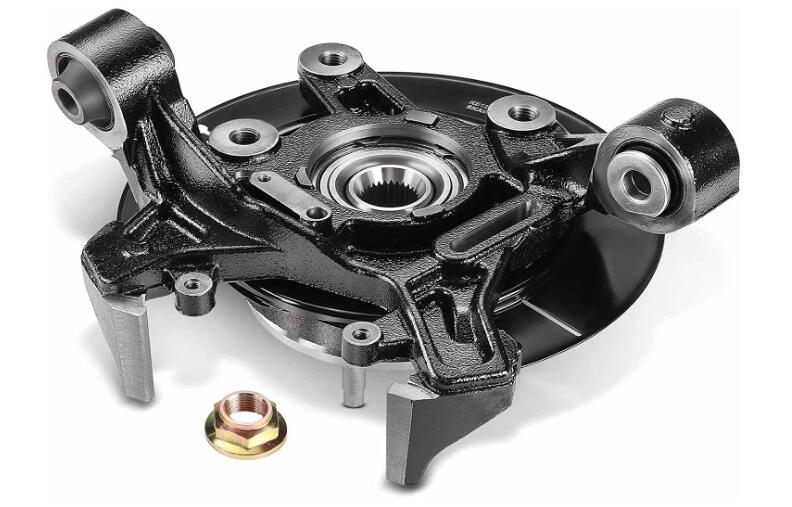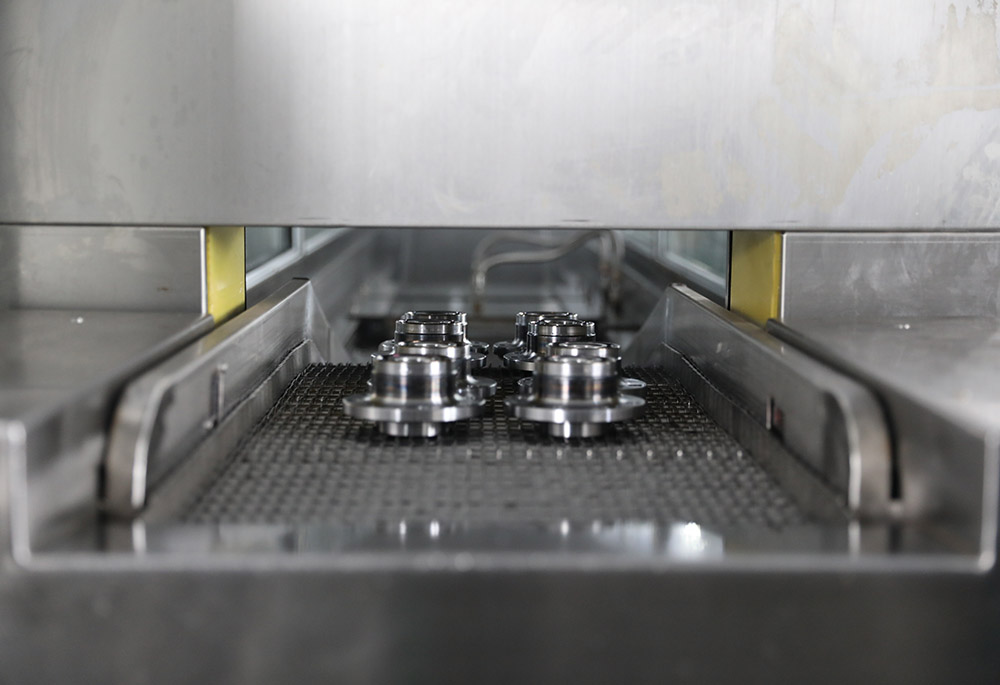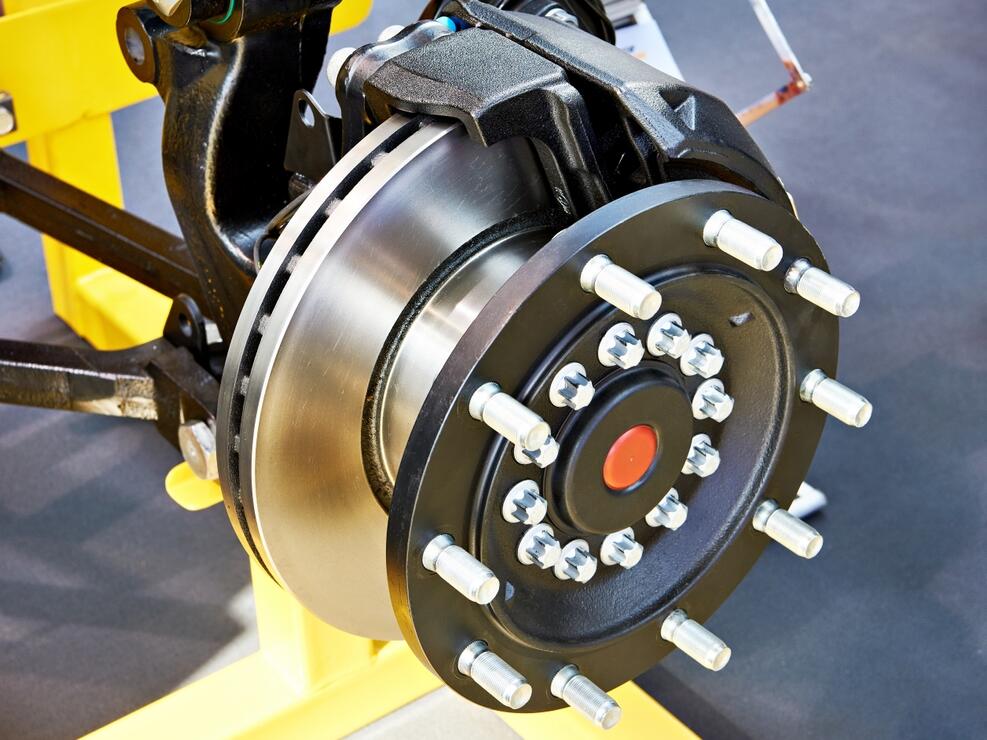Introduction
A wheel hub is far more than a part that holds the wheels in place.
This crucial component’s complex yet delicate architecture determines a vehicle’s performance, safety, and road stability.
Unraveling its design, quality, and functional attributes is a fascinating exploration.
This article dives deep into the anatomy of a high-quality wheel hub, comprehensively analyzing each part’s importance and distinctiveness.
The Core Components of a Wheel Hub
1. The Hub Shell
The hub shell is the principal element of the wheel hub assembly, acting as a firm foundation for the bearings, wheel studs, and often the ABS sensor ring.
The structural robustness and material choice for the hub shell critically affect the longevity and performance of the wheel hub.
High-quality hub shells usually incorporate durable, lightweight materials like forged aluminum or steel.
However, the material choice is only one facet of its quality.
The design factors, including the number of stud holes, the thickness, and the interior channel that houses the bearings, significantly contribute to the hub shell’s robustness and wear resistance.
The shell must also be manufactured with high precision, ensuring a perfect fit for the bearings and allowing for seamless operation.
2. Wheel Bearings
Housed within the hub shell, wheel bearings facilitate a smooth, frictionless rotation of the wheel hub assembly on the axle.
These bearings can be ball or roller type, each presenting specific advantages.
With their high load capacity and compact size, ball bearings are typically used in smaller, lighter vehicles.
In contrast, roller bearings, which provide superior load distribution, are favored in heavy-duty vehicles.
The manufacturing precision, material quality, and lubrication significantly determine a bearing’s lifespan and performance.
High-quality bearings, often featuring hardened steel races and premium lubricants, offer excellent resistance to wear and stress, maintaining smooth operation over extended periods.
3. Wheel Studs
As the components protrude from the hub shell, wheel studs secure the wheel onto the hub assembly.
Given their role in holding the wheel, the studs must be made from high-strength, wear-resistant materials such as hardened steel to withstand the significant forces exerted during vehicle operation.
The studs are designed with perfect threading in high-quality wheel hubs to ensure secure, easy-to-install lug nuts.
Also, their length and diameter are meticulously calculated to match the wheel’s specifications, ensuring proper fit and reducing the chance of lug nut loosening over time.
4. ABS Sensor Ring
A crucial safety feature in modern vehicles, the Anti-lock Braking System (ABS), relies on an ABS sensor ring integrated into the wheel hub.
The sensor ring, a tone wheel or reluctor ring, has teeth that generate an electronic signal as they pass by a magnetic sensor.
This signal, captured by the ABS controller, monitors wheel speed and triggers the ABS when necessary to prevent wheel lock-up during hard braking.
The quality of the sensor ring, its tooth count, and precise positioning within the hub assembly significantly contribute to the accuracy of the ABS.
In high-quality hubs, these components are manufactured with precision to ensure reliable, consistent performance of the ABS.
Understanding the Impact of Material Choices
The choice of materials in wheel hub components plays a crucial role in determining their strength, weight, wear resistance, and performance.
1. Aluminum
Aluminum is preferred in high-quality wheel hubs due to its excellent strength-to-weight ratio.
A lighter hub reduces the vehicle’s unsprung weight, enhancing handling characteristics and fuel efficiency.
However, despite the high corrosion resistance of aluminum, it needs a protective coating, usually anodization, to prevent surface wear and maintain its appearance.
2. Steel
With superior strength and impact resistance, steel is commonly used in wheel hub manufacturing.
Steel hubs can withstand high-stress loads, often in heavy-duty or off-road vehicles.
However, steel hubs require rust-resistant coatings or galvanization to counter their inherent susceptibility to rust.
3. Composite Materials
In some high-end wheel hubs, composite materials like carbon fiber are used, which combine aluminum’s lightness with steel’s strength.
They’re often found in high-performance or luxury vehicles due to their high cost. Composite materials can enhance vibration-damping characteristics, leading to smoother ride quality.
Lubrication and Seals: Vital Elements of Wheel Hub Longevity
Moving to the invisible yet crucial aspects of a wheel hub, lubrication, and sealing play an instrumental role in its performance and lifespan.
1. Lubrication
Quality wheel hubs employ premium lubricants that ensure smooth bearings rotation within the hub assembly.
Lubrication minimizes friction between the moving components, reducing heat generation and wear.
In sealed hub units, the lubricant is pre-filled and does not require frequent maintenance.
The type and viscosity of the lubricant, its temperature tolerance, and its resistance to degradation all contribute to the longevity of the wheel hub assembly.
Synthetic lubricants with superior temperature stability and anti-wear characteristics are often used in high-quality hubs.
2. Seals
Seals in the wheel hub prevent the ingress of dust, water, and road debris, protecting the bearings and lubricant.
They also retain the lubricant within the hub.
High-quality seals are made of durable materials like synthetic rubber, which can resist temperature extremes, corrosive substances, and mechanical wear.
The design of the seal, especially the lip that makes contact with the hub, is crucial for its sealing performance.
In top-grade hubs, seals often feature multiple lips for enhanced protection.
Impact of Wheel Hub Quality on Vehicle Performance
The quality of a wheel hub assembly extends beyond its components and has far-reaching implications on overall vehicle performance.
1. Ride Comfort
High-quality wheel hubs, with their precise manufacturing and assembly, provide smooth rotation of the wheels, minimizing vibrations transmitted to the vehicle body. This results in a smoother, more comfortable ride.
2. Fuel Efficiency
Quality wheel hubs can enhance fuel efficiency by reducing rolling resistance. This is particularly noticeable in wheel hubs with high-grade bearings and lubricants.
3. Handling
Wheel hubs directly affect a vehicle’s handling characteristics. Lightweight, rigid hubs can improve steering responsiveness and stability during cornering.
4. Safety
Quality wheel hubs contribute to the vehicle’s active safety through their role in the ABS. Also, reliable wheel hubs minimize the risk of catastrophic failures that could lead to accidents.
Optimizing Wheel Hub Assembly for Performance
Although the wheel hub may seem essential, optimizing its design and manufacturing can significantly impact a vehicle’s performance.
High-quality wheel hubs, such as those used in high-performance and luxury vehicles, often feature design enhancements for improved performance.
1. Reduced Unsprung Weight
The wheel hub can influence ride quality and handling as part of the vehicle’s unsprung mass.
Lower unsprung weight allows for quicker suspension response and better road-holding ability.
High-quality wheel hubs can be engineered from advanced, lightweight materials such as high-strength steel, aluminum, or carbon composites to reduce weight without compromising strength or durability.
While more expensive, these material choices can significantly improve a vehicle’s performance characteristics.
2. Improved Heat Dissipation
The wheel hub assembly can experience significant heat in vehicles with disc brakes, especially under heavy braking.
If not properly managed, this heat can degrade the lubricant and the bearing, shortening its lifespan.
Premium wheel hubs often incorporate features for improved heat dissipation, such as heat-resistant materials, special seals, and even built-in heat sinks.
3. Enhanced Rigidity
Rigidity is a critical characteristic of a wheel hub assembly, affecting the vehicle’s handling and ride quality.
A more rigid hub can better withstand lateral forces during cornering, leading to more precise steering and better stability.
High-quality wheel hubs are designed with optimized geometry and high-strength materials to enhance rigidity.
The Link to the ABS System
Another vital aspect of the wheel hub assembly is its role in the Anti-lock Braking System (ABS).
The ABS system prevents wheel lock-up during braking, reducing skidding and improving control.
For this purpose, the ABS uses a sensor, typically mounted in the wheel hub assembly, to monitor wheel speed.
High-quality wheel hubs are designed to support reliable ABS function.
They incorporate features like integrated sensor mounts and magnetic encoder rings.
Moreover, their precise manufacturing ensures correct alignment and clearances for the ABS sensor, ensuring accurate speed readings.
Quality Control in Wheel Hub Manufacturing
Given the wheel hub’s critical role, stringent quality control is necessary for its manufacturing.
High-quality wheel hubs undergo multiple inspections and tests during and after production to ensure reliability.
1. Dimensional Inspection
This involves checking the dimensions of the hub and its components, such as the bore size, bolt pattern, flange thickness, and overall dimensions, against the specified tolerances.
This inspection ensures correct fitment and smooth operation of the wheel hub assembly.
2. Material Testing
This checks the materials used in the hub for their composition and properties.
For example, the steel used in the hub and bearings may be tested for its hardness, tensile strength, and grain structure.
3. Functional Testing
This includes tests like rotational smoothness, seal effectiveness, and ABS sensor functionality.
These tests ensure the hub assembly performs as intended under simulated operating conditions.
4. Durability Testing
This involves subjecting the hub assembly to prolonged stress or extreme conditions to assess its lifespan and failure modes.
These tests help predict the hub’s performance and durability under real-world driving conditions.
In Conclusion
The wheel hub is a component that serves as the linchpin of the vehicle’s road connection; its quality and efficiency are paramount to the entire driving experience.
A dive into the anatomy of the wheel hub assembly unveils the complexity behind this seemingly simple component, showcasing the importance of advanced materials, precise design, meticulous manufacturing, and stringent quality control protocols in shaping a high-quality wheel hub.
As we delve deeper into the realm of automotive engineering, we realize that the quality of each component, such as the wheel hub assembly, contributes significantly to a vehicle’s overall performance, safety, and longevity.
Therefore, understanding these details helps us make informed choices when selecting components for our vehicles, whether for personal use, commercial fleets, or automotive manufacturing.
In a fast-evolving automotive landscape, where every detail counts, the industry’s quest for quality, performance, and durability never ceases. And neither does our quest for knowledge and understanding of these fascinating machines we rely on daily.
Every wheel’s turn, every mile crossed, and every smooth, safe ride stands testament to the marvel of engineering that is the high-quality wheel hub.
As we drive towards the future, we celebrate the intricate symphony of components that come together in perfect harmony, creating a journey that’s not just about reaching our destination but enjoying the ride.
Remember, a wheel hub isn’t just a piece of metal. It’s a testament to human ingenuity, a vital cog in the machine, a marvel of engineering that keeps us moving forward.
Regarding your vehicle, don’t just settle for any wheel hub; choose quality, reliability, and the best.




